Sumba is an island in Indonesia that you’ve most likely never heard of. It’s relatively undiscovered and certainly not geared for tourism.
There’s so much more to Sumba Island than what meets the eye.
The rugged coastline and exotic beaches. The unique traditions and rich history. The diverse cultures and isolated way of life.
I spent 2 weeks exploring Sumba, and whilst traveling to the island is not easy, it was an experience that will be hard to beat.
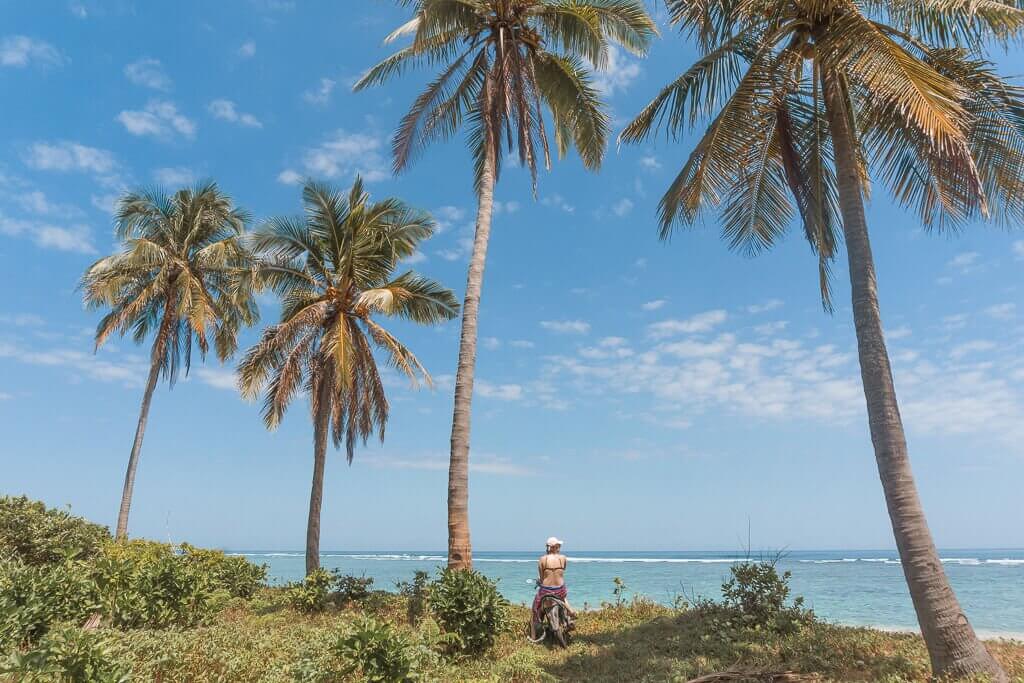
Quick Navigation
About Sumba Island
Sumba is one of the five poorest islands in Indonesia. As a result, life for the Sumbanese people isn’t easy as the rural areas lack clean water, proper housing, and adequate healthcare and education.
A sad reality is that when children reach an age where they can assist with work at home, this becomes a priority, and their schooling comes second.
The Sumbanese live on their own crops and are unaffected by material wealth.
Sumba Island has recently become a hotspot for local tourists. Indonesians have begun to explore Sumba to escape the hordes of travelers who vacation at the more popular islands.
International tourists are following suit and discovering the breathtaking natural landscapes of Sumba that are unspoiled by development.
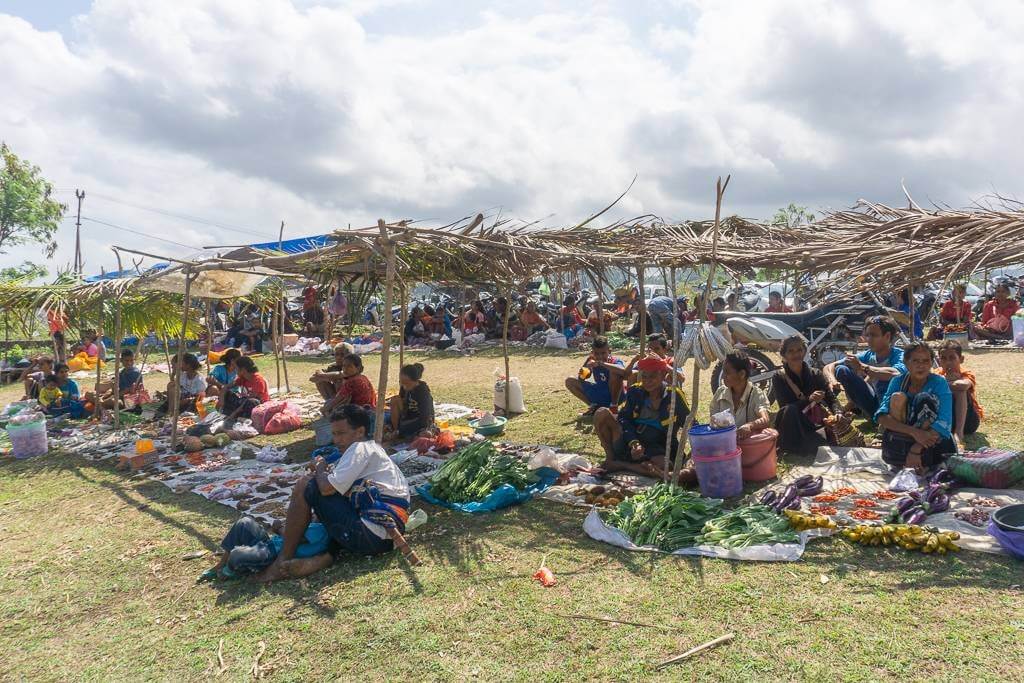
Where is Sumba Island?
Sumba Island is in the East Nusa Tenggara province of Indonesia. It’s south of Bali, and west of Flores Island.
How to get to Sumba Island?
Flights from Bali to Sumba
Sumba is a big island, twice the size of Bali in fact. It has 2 airports, one on the west, Tambolaka Airport, and the other on the east, Waingapu Airport.
Make sure you know where you want to go before you book your flights to Sumba.
The distance from one side of the island to the other is over 7 hours drive, and the price for a taxi to get between the two is more expensive than the flight ticket itself.
Airlines flying into Sumba from Bali include Garuda Indonesia, Wings Air, and Nam Air. Garuda Indonesia has the best track record whilst Nam Air is the more budget-friendly option.
I flew both whilst in Indonesia and had no problems with either.
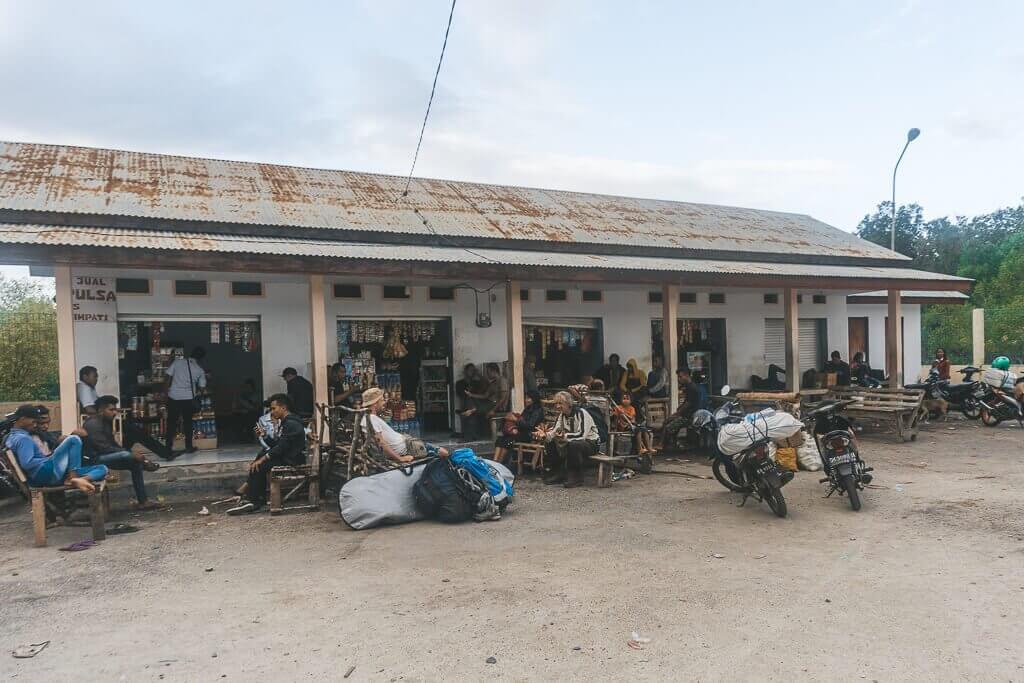
Ferry to Sumba
Sumba Island can also be accessed via a ferry from Aimere in Flores to Waingapu in East Sumba.
My advice is to fly to Sumba from Bali, travel overland, then catch a ferry from Sumba to Flores. Flores is an incredible island with the most amazing diving and volcano hiking.
The ferry from Waingapu in Sumba to Aimere in Flores departs every Tuesday and Friday at 10pm. The trip takes 6-9 hours, depending on the weather.
Make sure you book first class tickets, which only cost $3! The general area is festive but extremely full (and smoky) and you’ll struggle to find a seat. First class is far more comfortable, with cleanish toilets and you’ll have a place to sleep for the overnight journey.
Best time to visit Sumba Island
The best time to visit Sumba is during the dry season which runs from May to October.
You can also travel to Sumba during the rainy season from November to April but expect daily afternoon rain showers.
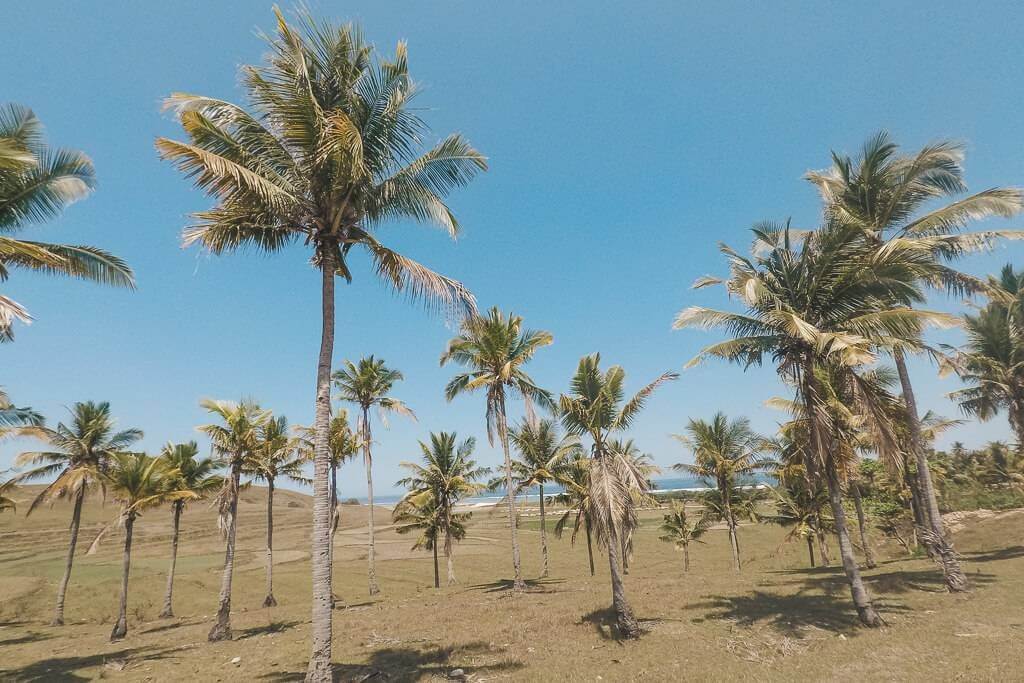
Where to explore on Sumba Island?
There are 2 distinct parts that make-up Sumba Island: The east and west of the island, each having its own airport.
After having traveled to both sides of Sumba, I’ve learned that they are vastly different.
The common denominator between east and west Sumba? There is very little tourist infrastructure in place.
Explore West Sumba
The west is arguably the more popular part of Sumba Island. More travelers choose to explore the beautiful Weekuri Lake, the gorgeous coastline and the abundance of traditional villages.
- Tambolaka: Tambolaka Airport is the gateway to west Sumba. There isn’t much to do in Tambolaka so don’t spend time here if you don’t have to.
- Waikabubak: To the east of Tambolaka lies Waikabubak. It’s one of the central hubs in Sumba, with a collection of communities nearby. If you’re backpacking through Sumba and want to visit traditional villages, Waikabubak is a good place to base yourself. There are a few accommodation and restaurant options here, and you can also find public buses that go from west to east Sumba.
- Nihi Sumba: There’s a high chance that you’re searching for what to do in Sumba because of the spectacular images you’ve seen of the famous Nihi Sumba hotel. This is also located in West Sumba.
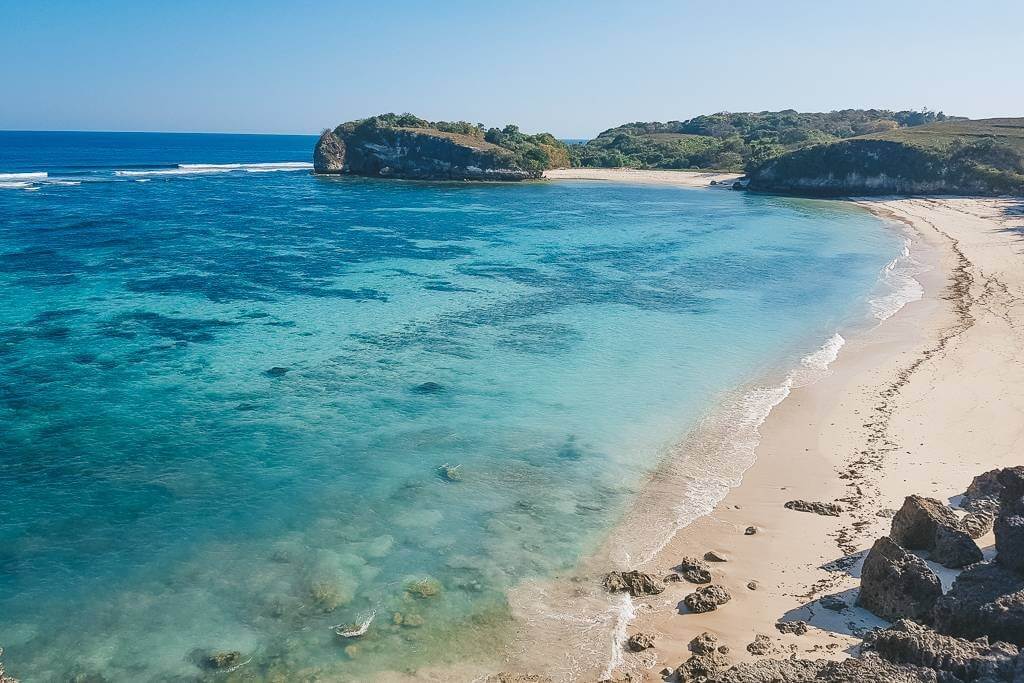
Explore East Sumba
In contrast, the east isn’t as populated as the west. It’s dry and arid, and you can drive for miles without seeing anything. Seaweed farming is common in the southeast of the island and there are said to be crocodiles in these waters.
- Waingapu: Another hub on Sumba Island is Waingapu which lies towards the east of Sumba island and has its own airport.
- Pantai Kalala: Kalala lies along the coast of East Sumba. It’s completely unaffected by tourism and as remote as you’ll get.
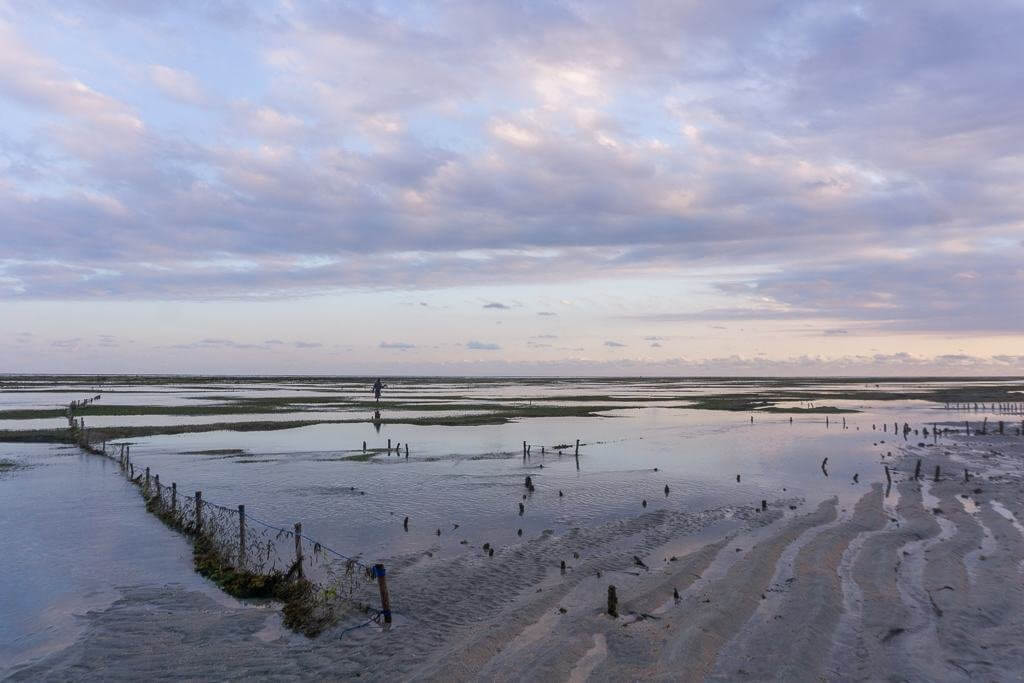
7 Things to do in Sumba Island, Indonesia
Visit traditional villages in Sumba
Sumba Island has strong, preserved traditions and you can experience these by visiting a traditional village. Also unique to Sumba are the houses with tall pointed roofs made of dry grass.
There is no entrance fee to enter these traditional villages, but tips are appreciated.
Below are some of the popular traditional villages in Sumba:
- Rende Village is in East Sumba has huge megalithic tombs in the center of the village. It’s close to Wai Marang waterfall so you can visit both on a day trip from Waingapu.
- Praijing is another traditional village located close to Wakiabubak, West Sumba.
- Ratenggaro is one of the most beautiful and most visited villages on the west side of Sumba Island. It’s situated on a cliff, next to a deserted beach.
- Unfortunately, Tarung, which is an iconic village in Sumba, burnt down in 2017 and I cannot confirm whether it’s been reconstructed yet.
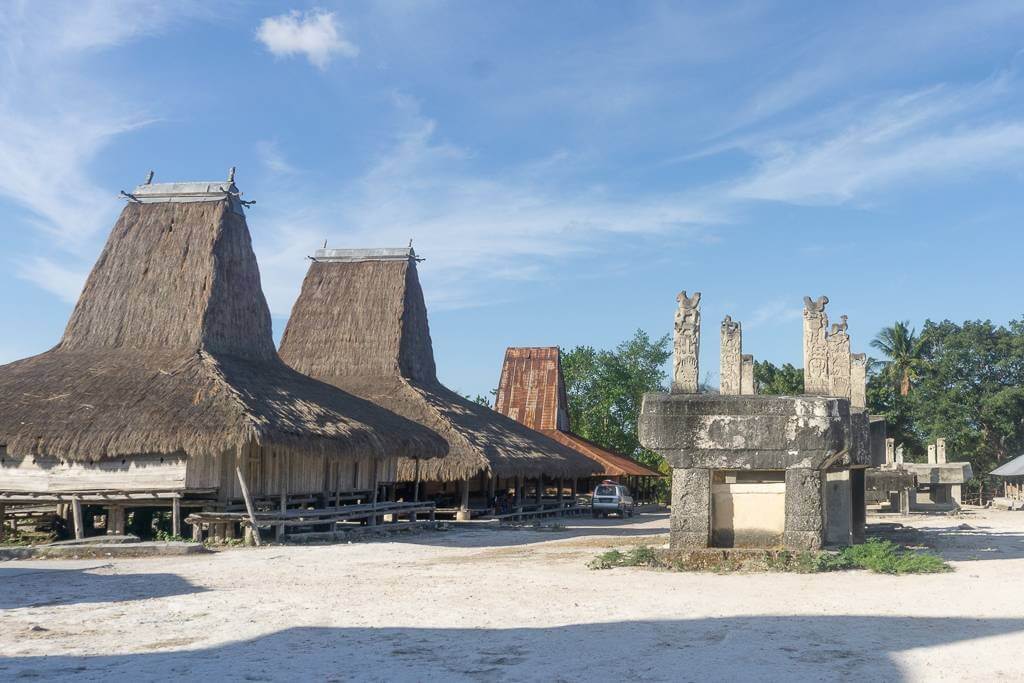
Explore the picturesque Weekuri Lake
This iconic lake in West Sumba is one of the main attractions on the island. It’s 45 minutes from Tambolaka airport and chances are you’ll have the beautiful Weekuri Lake all to yourself.
Catch some waves
We traveled to Sumba to check what all the hype was about from the surfing community. In summary, the waves at Sumba Island are better suited to experienced surfers.
I dedicated an entire blog post to my experience of surfing in Sumba (for beginners and experienced surfers).
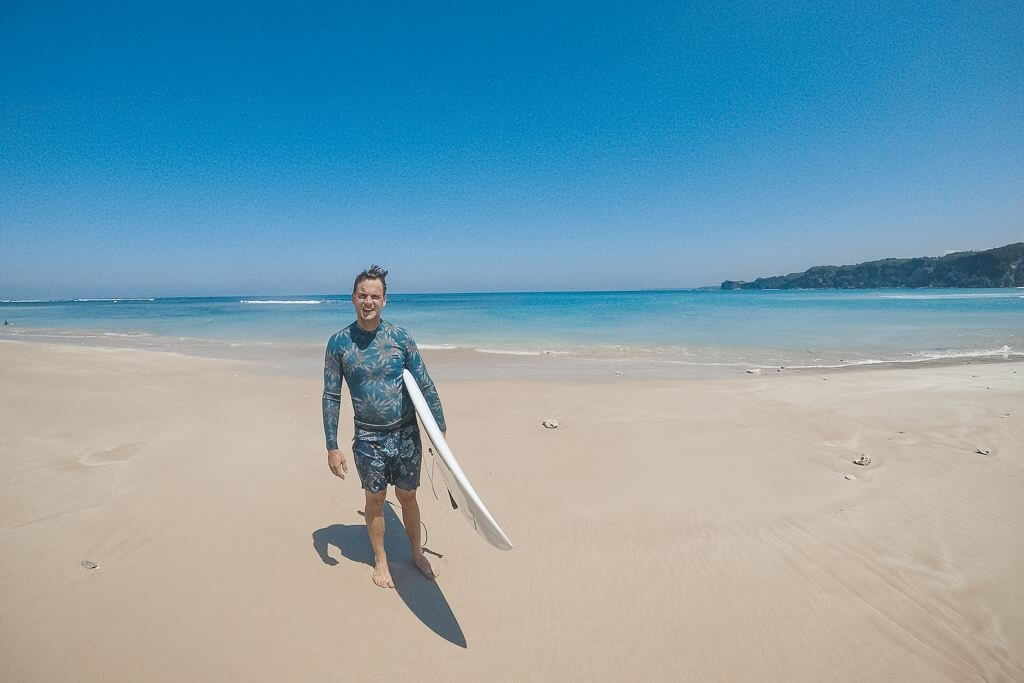
Visit Sumba waterfalls
Air Terjun Wai Marang
This gorgeous waterfall is on the east of Sumba Island, near Rende Village. The road leading to the entrance is a rough one and I’m surprised our car made it through the muddy terrain.
To access Wai Marang Waterfall, you’ll walk 10 minutes through open plains, before reaching a forest. This is where you’ll have to climb down to the foot of the waterfall.
After seeing images of the other waterfalls in Sumba, I must argue that Wai Marang Waterfall is the best!
Expect to pay 100 000 IDR ($7) for a guide and 20 000 ($1) for parking.
La Popu Waterfall
La Popu Waterfall is located on the west of Sumba Island, in the Wanokaka area. It’s one of the most popular waterfalls in Sumba and entrance (including a guide) is approximately IDR 200 000 ($14).
I was on the fence about visiting La Popu Waterfall. After discussing it with other people and getting feedback that it isn’t all it’s made out to be, I decided to spend my day on the beach instead.
There was recently a landslide at La Popu Waterfall so check with the locals before you head out to see it.
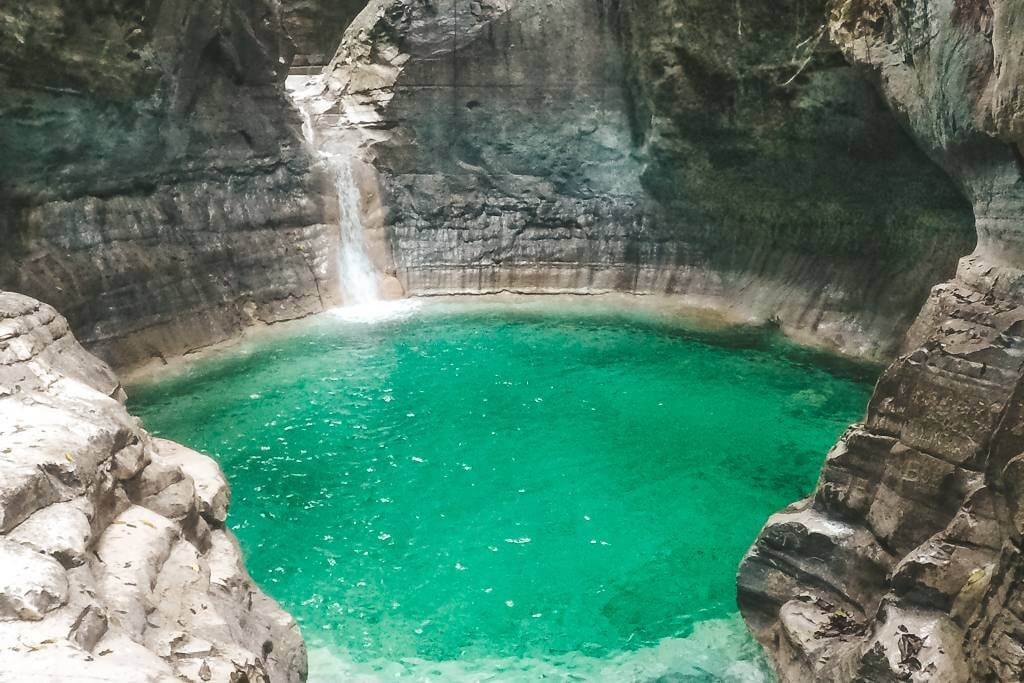
Explore the best beaches in Sumba
Sumba has got to have the best beaches I’ve seen. Ever.
Why? Well besides the blue water, the beaches in Sumba are completely deserted.
There are no buildings, no cafes, no people. No vendors selling water, nor snacks. Empty.
Compared to the southeast of Sumba, the beaches on the southwest are more pristine, the water is crystal clear and the sand is super soft and white.
In contrast, the beaches on the southeast are rougher, and not as great. If you’re traveling to Sumba for the beaches, check out the first four that I’ve listed below:
- Pantai Marosi: A long white sandy beach, great for surfing, swimming and relaxing.
- Unknown: This was one of my favorite beaches in Sumba! Located near Pantai Marosi lies a small secluded beach. To access it, you need to go through a cave and crawl through a small hole. This adventure was one of my favorites in Sumba, so if you’re around Pantai Marosi, ask the locals for directions.
- Pantai Kerewei: Not as great as Marosi Beach, but if you’re in the area it’s worth a visit.
- Tarimbang Beach: Beautiful, clean beach with great waves.
- Pantai Watuparunu and Kalala Beach: Located in the southeast of Sumba, these beaches weren’t my favorite when compared to those on the west of the island.
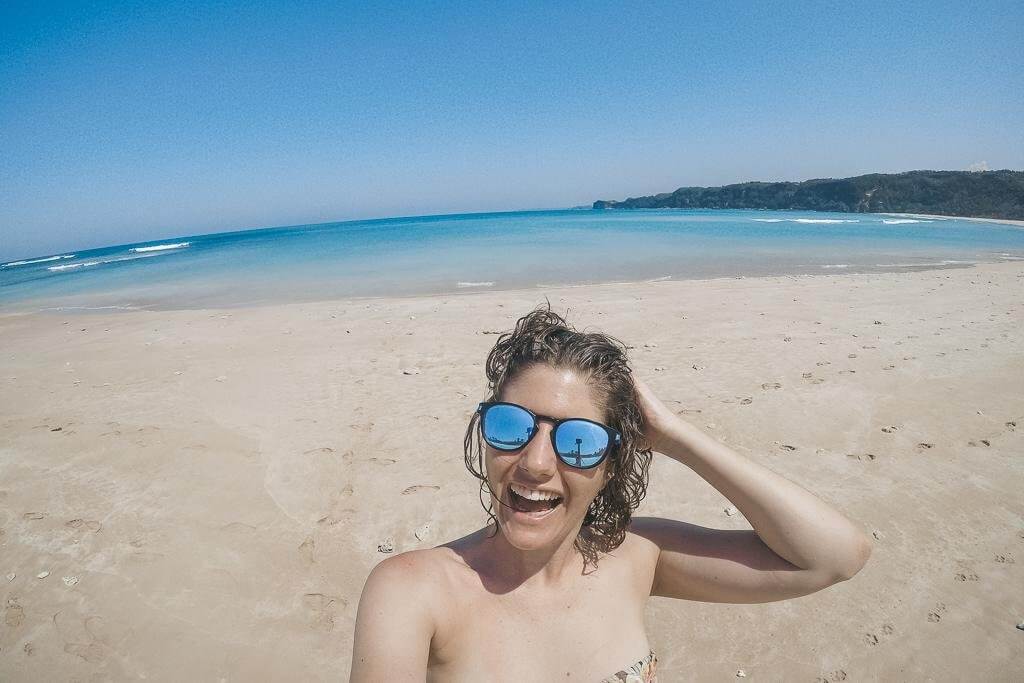
Experience a Sumba traditional festival or the Pasola Festival
One of the best-known festivals on Sumba Island is the Pasola Festival.
This takes place every year, sometime between the months of February and March. Here, men ride bareback on horses and a bloody spear war ensues.
Back in the day, people were killed during the Pasol festival! Supposedly, the more blood that is shed on the fields, the better, as the outcome is a greater harvest. The spear tips and metal blades have since been replaced with blunt, wooden tips and so fatalities aren’t as common as before.
Despite the huge attraction and the tradition behind the Pasola Festival, watching people throw spears at each other is not something I would want to witness.
But one must respect the culture and traditions of other countries, and the Pasola Festival is one of those.
Horseback festival
Despite having missed the Pasola Festival, I was lucky enough to witness a horse-riding festival that took place at a nearby village in West Sumba.
Again, it’s remarkable to see how different life on Sumba Island is compared to visiting Bali. And how these horse races probably resemble how horse racing was done hundreds of years ago.
Be sure to ask the locals about these festivals so that you don’t miss them.
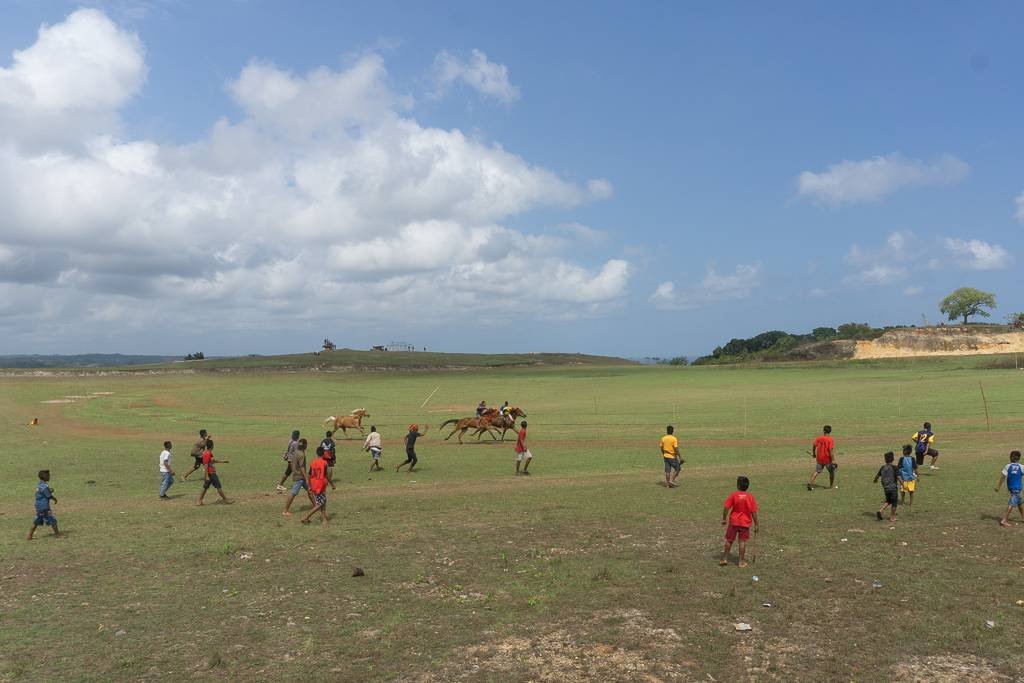
Wairinding hills
Located alongside the road between Waikabubak on the west and Waingapu on the east, lies Wairinding Hills.
It’s a popular place to have a break when traveling between the two cities and the beautiful views don’t hurt.
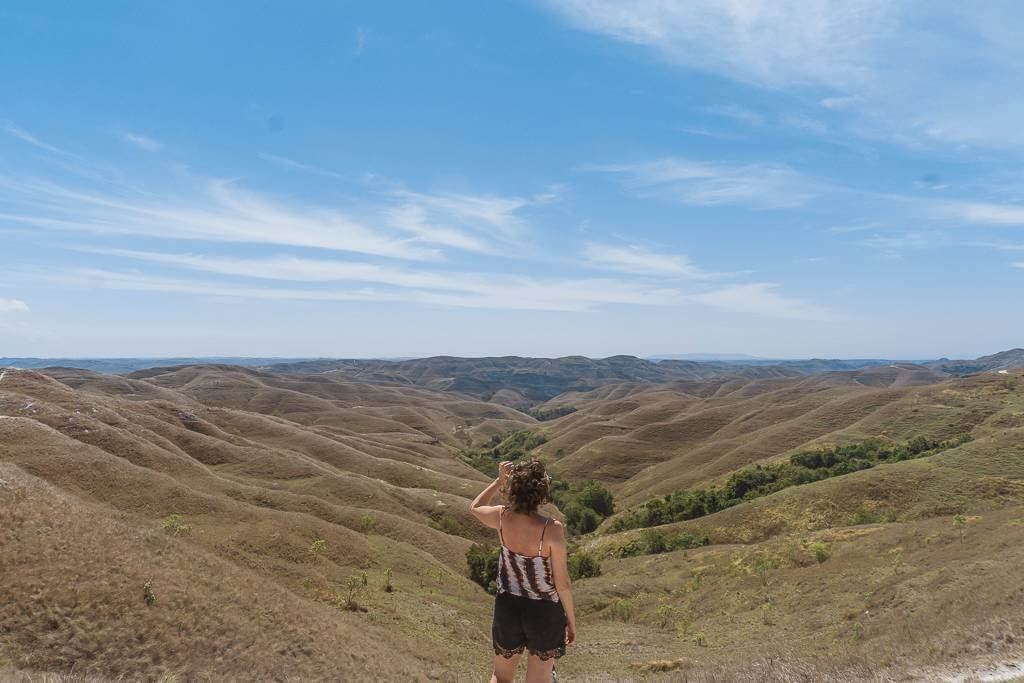
How to explore Sumba Island? With a tour group or travel independently
Sumba Island tour groups
Transportation options in Sumba are limited as the island isn’t geared for tourism. As a result, most visitors book a tour through an agency.
For these tours, all your travel is pre-booked. You’ll stay in the central hubs and take day trips to the attractions in Sumba. This is by far the easiest and most convenient way to travel to Sumba and you should give yourselves 3 to 6 days to explore the island.
Alternatively, you can hire a car and a driver to take you to the attractions which will allow more freedom to explore on your own terms. Expect to pay $75-$90 for a full-day car rental including a driver and petrol.
READ MORE: 30+ FAMOUS INDONESIA LANDMARKS
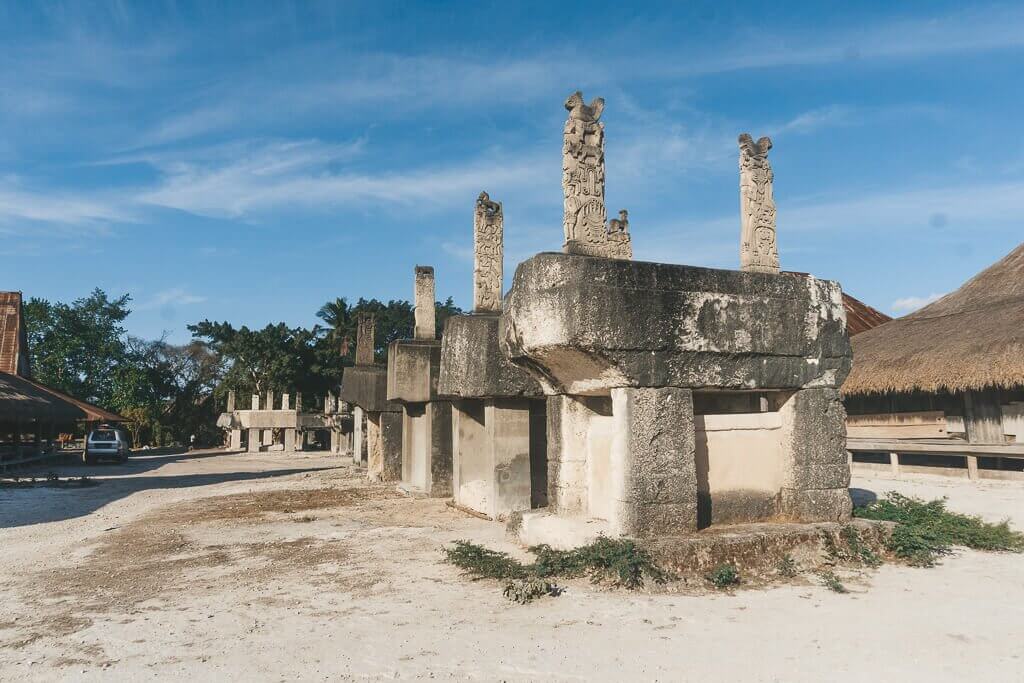
Explore Sumba independently
I’m not a huge fan of tour groups and fixed schedules. I like to travel on my own terms and explore a country as the locals do, using public transport.
After traveling through Indonesia and other countries in Asia, I was hoping for the same in Sumba.
Unfortunately, not!
If you’re traveling between the main cities of Tambolaka, Waikabubak, and Waingapu, you’ll be able to travel relatively easily using public transport – but check the bus schedules first as they don’t run frequently.
Whilst inland travel is relatively easy, getting to the coastal areas, and the countryside is more challenging. I don’t even know if there is public transport that reaches these areas!
If there is, expect it to be extremely slow. A drive that took me 3 hours by private van, took other travelers over 6 hours by public bus.
If you’re wanting to do an overland trip using public transport, rather head to Flores which is an island next to Sumba. I spent 2 weeks here and it’s my favorite Indonesian island to explore!
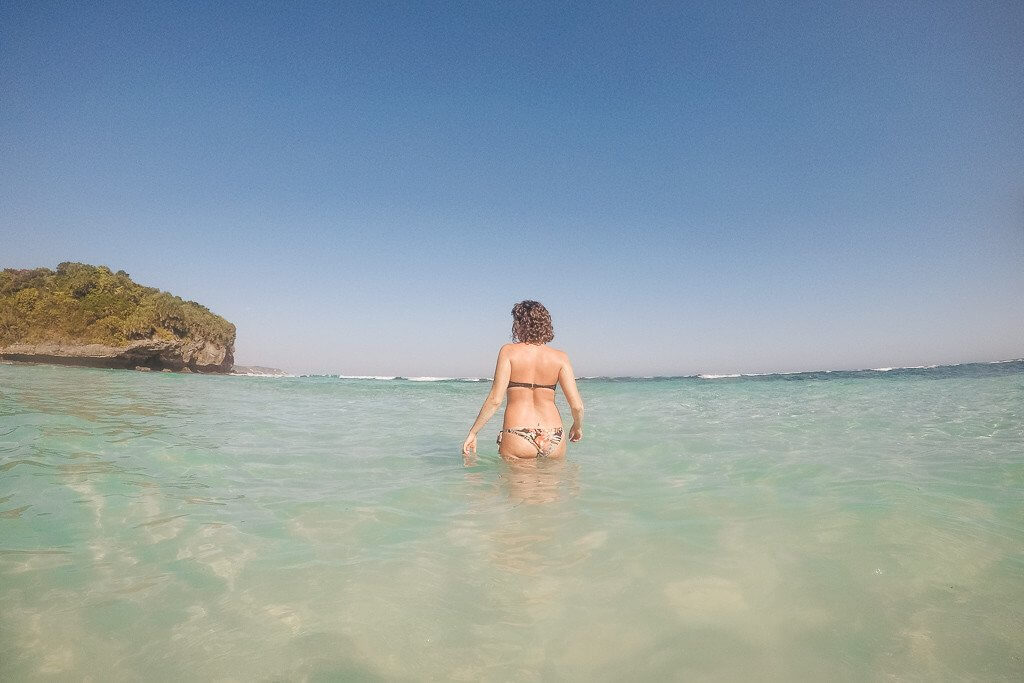
Motorbikes in Sumba, Indonesia
Perhaps you had ideas to travel Sumba by bike, as is possible on most Indonesian islands. But who would’ve thought that renting a motorbike in Sumba would be so difficult!
Because Sumba is a very poor island, not many people own motorbikes. Unlike in Bali, there are no bike shops on the side of the roads and renting one can be challenging.
In the cities, you’ll be able to find a bike to rent for a few days, but I would recommend that you prearrange this or else you could spend hours trying to locate one.
Toward the coast, it’s practically impossible unless you have pre-booked with your homestay.
Condition of the motorbikes
Also, don’t expect these bikes to be in the best condition. The motorbikes on Sumba are old and not serviced regularly.
To make matters worse, the roads in the rural areas are in a terrible state and you’ll find yourself driving through fields and on uneven gravel roads. Our bike broke down numerous times during the few days we had it.
This is also why I don’t suggest that you explore Sumba on a bike as there is a strong chance that it will break down, leaving you in the middle of nowhere, with no help. There’s no electricity in the rural areas, the roads are pitch dark after sunset and you don’t want to be stuck out there alone.
I paid IDR 150 000 ($10) per day for bike rental in Sumba from my homestay.
READ MORE: COMPREHENSIVE BALI PACKING LIST
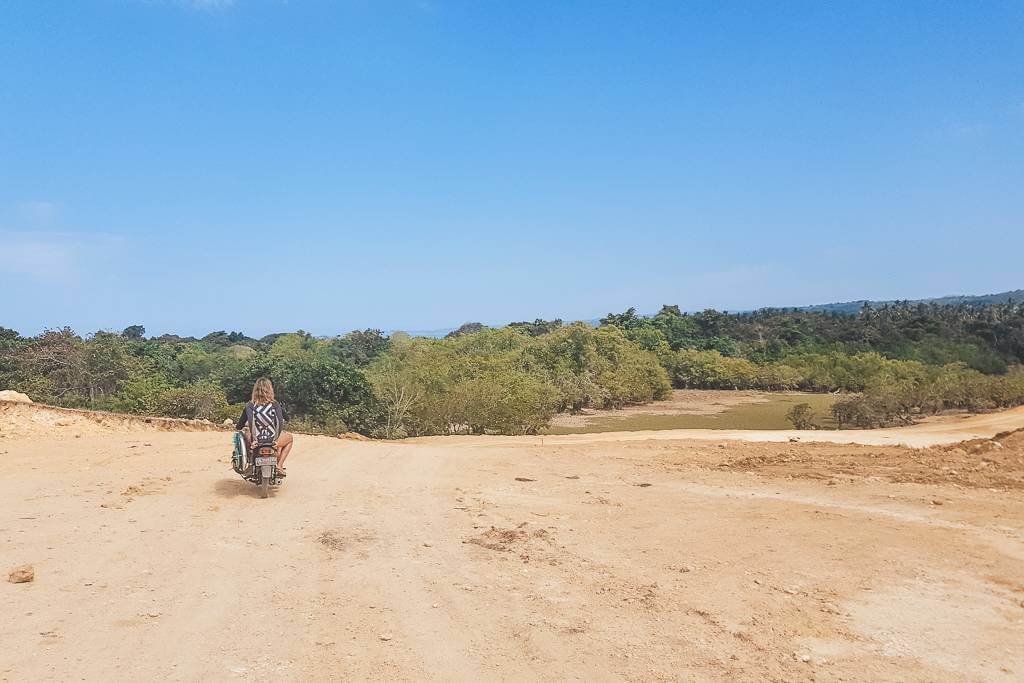
Sumba accommodation
Accommodation in Sumba is mostly limited to towns where prices are slightly higher than you would find elsewhere in Indonesia.
If you’re traveling to the coast, you may have to dig a bit deeper into your pockets. Here you can expect to find a homestay that will include all meals as there are no restaurants nearby.
Nihiwatu Sumba
Nihiwatu is an uber luxurious, secluded resort situated in southwest Sumba. It attracts the rich and famous, and the resort even “owns” the wave in front of the property.
A night at Nihiwatu will cost anything from $1 000 to $10 000 per villa per night. Check prices here!
Whilst Nihiwatu Sumba is unaffordable for most people, the resort has a huge impact on the community. The Sumba foundation was started by Nihiwatu in 2001.
This foundation aims to provide humanitarian aid to the local communities through village-based projects. Through the Sumba Foundation, Nihiwatu educates the youth, provides healthcare to communities, and ensures that the Sumbanese values and traditions are preserved.
This is a great initiative and after you’ve traveled to Sumba, you’ll realize how much the island needs all the support it can get.
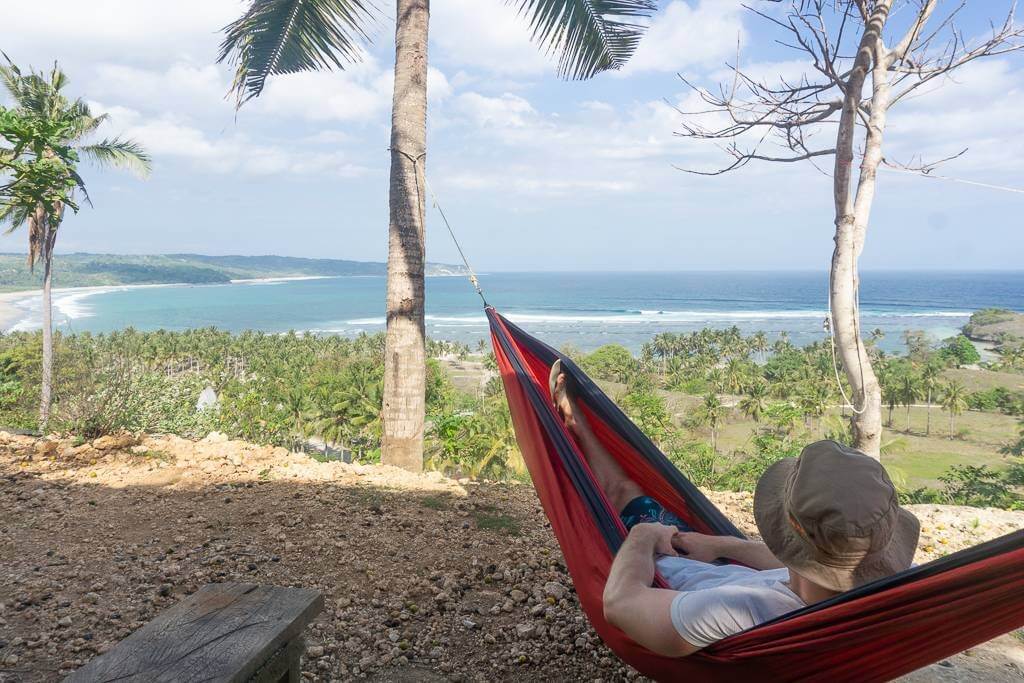
Is Sumba expensive?
Yes!
If you plan to travel to Sumba and want to experience all the things to do on the island, make sure you have enough cash saved up.
This is especially true for backpackers who are used to convenient public transportation, and affordable food and accommodation options.
I noticed a considerable increase in prices when compared to the rest of Indonesia. Most goods need to be imported from other islands and travel time between locations also needs to be factored in as everything is so spread out.
This can also be attributed to the fact that I chose to stay in small villages near the beach, and not in the big towns. Competition is limited here, and resources are scarce, so the costs are higher.
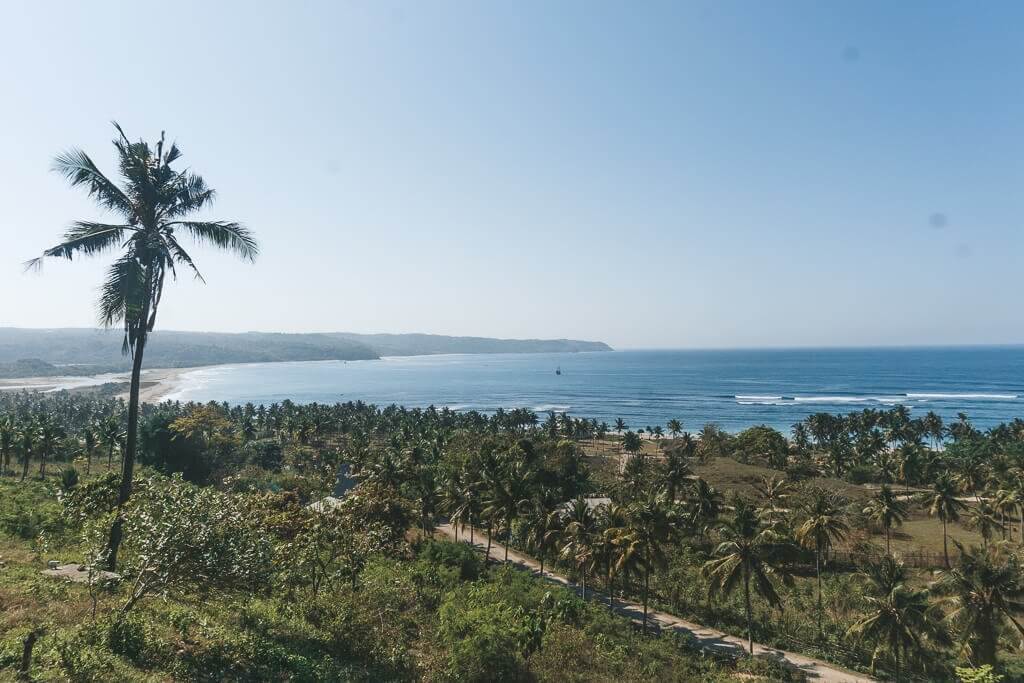
What to pack for your Sumba trip
Sumba is a remote island, as remote as you’ll get. Convenient stores and pharmacies are hard to come by and it’s important to arrive prepared.
- Mosquito spray: There is the risk of Malaria on Sumba Island. Whilst I didn’t take any malaria medication, I used mosquito spray every day.
- Sun protection
- Flashlight: Electricity is limited on Sumba Island and after 6 pm you might not have access to power.
- Alcohol: There is no hard liquor in Sumba so if you feel like a Gin and Tonic after a long day in the sun, bring your own booze. Beers are available and if you’re lucky, they might be served chilled (But they probably won’t!)
- Activities: You explore Sumba to get away from the hustle and bustle, but make sure you bring some games to keep you entertained such as cards, bat and ball and a frisbee. Also, pack in a few books and if you’re traveling with your laptop, download some movies before you arrive in Sumba.
- First aid kit: Bring plasters (Band-aid), headache tablets, scissors, and antiseptic lotion. Make sure you pack these as you won’t find them unless you stay in the bigger cities on Sumba Island.
- Cash: There are ATM’s in the cities but rather be safe and bring cash with you. BNI Bank and Mandiri are the most reliable.
- Sim card and data: I advise using Telkomsel as they have the best reception on the island.
You can find my comprehensive Indonesia packing list here which includes all of the above and so much more!
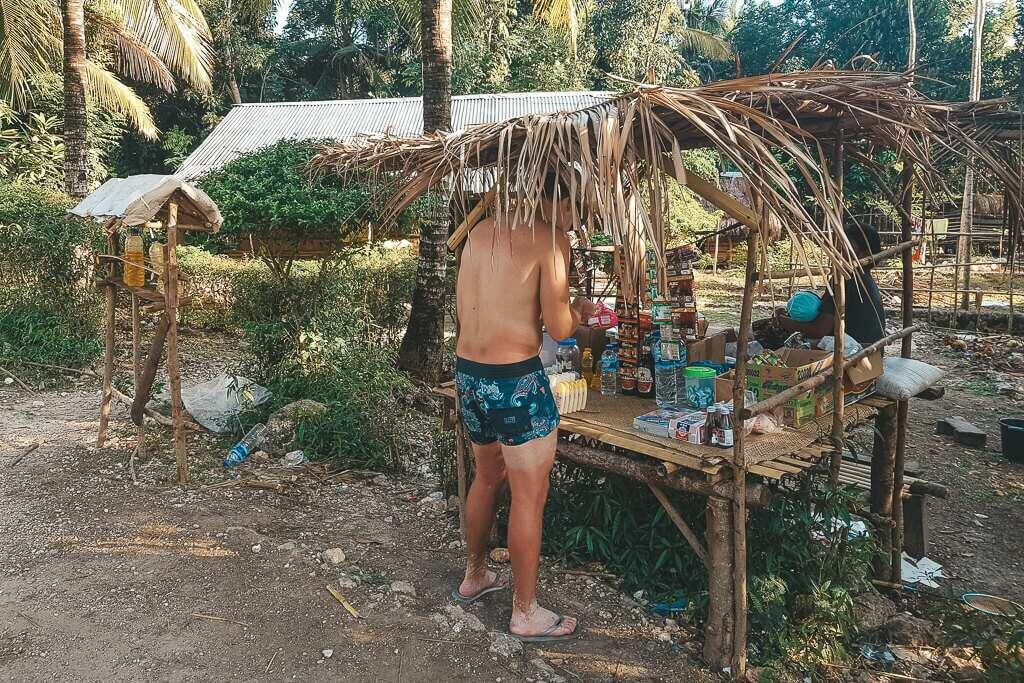
Things to know before you explore Sumba Island
- English is not commonly spoken on Sumba Island and the villages have their own language.
- Chewing betel nut is a cultural and social tradition in Sumba and the effects include a boost of energy and feelings of euphoria. You’ll notice the local’s mouths are stained red and this is a result of chewing the fruit.
- Whilst there is cell phone connection on Sumba, most places don’t have wi-fi so make sure you arrange a sim and data before your arrival. Reception isn’t great in the rural areas so be prepared for no connectivity at times.
- It’s common for men and boys on the west of the island to wear a sarong around their hips with a machete placed in it. So, don’t be surprised when you have kids with machetes running after you as this is yet another Sumba tradition.
- Sumba is known for its famous ikat textiles which are extremely detailed and made from natural dyes. These garments are worn daily and are exchanged during traditional ceremonies.
- The Sumbanese people and those who follow the Marapu belief have an animalistic outlook to life. With death, comes a new life in the world of spirits, and eternal life after death. They believe that death is a blessing which shouldn’t be a time for mourning, but rather celebration. The family spends a small fortune on the burial of the deceased, which often leaves them broke thereafter. Sometimes it takes years before they can afford to pay for the funeral. They will then keep the deceased body on the top floor of their house until such a time that they can have a proper ceremony. During the burial, buffalo, cattle, pigs and other animals are sacrificed. These graves are easily identified by the megalithic tombs which are commonly found all over Sumba.
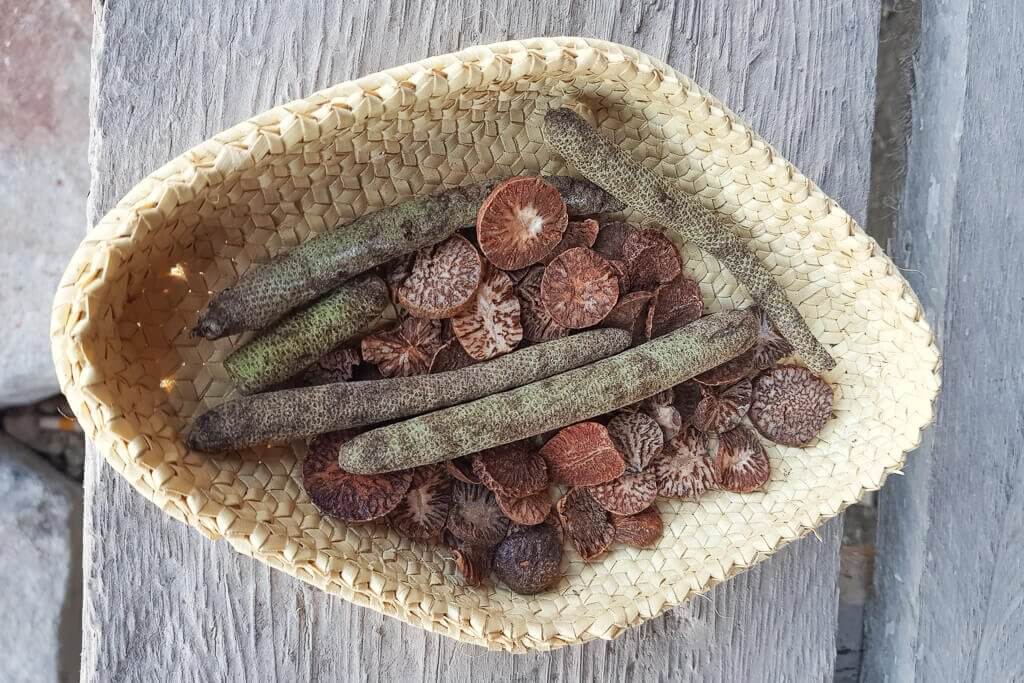
Is Sumba Safe
Sumba is safe, but we were warned not to leave anything out in the open.
There have been reports of valuables being stolen from motorbikes whilst tourists are out exploring. It’s also advised that you don’t travel after dark.
Personally, I never felt unsafe during my time in Sumba or any other island in Indonesia.
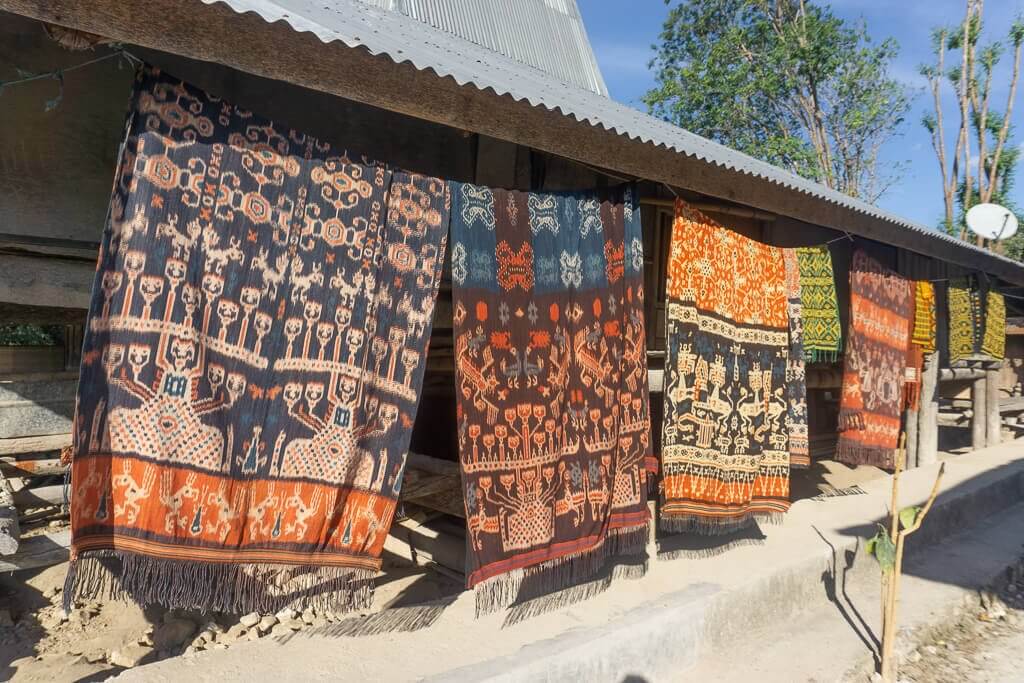
What is Sumba known for
Sumba Island is known for it’s surfing and stunning landscapes. It has recently been put on the map as a travel destination thanks to the gorgeous Nihi Resort.
Is it worth including Sumba in your Indonesia itinerary
Yes and no.
I spent 2 months backpacking Indonesia and loved the uniqueness of Sumba as I’d never explored an island as remote and secluded as this. It was an eye-opener and allowed me to reflect on what’s really important in life.
For 2 weeks in Sumba, I had cold showers, bucket toilets and had little access to electricity and internet. I never wore makeup, my hair was always a mess and I practically switched between my cozzie and the same sarong daily.
I saw what the local people had and how their lives were filled with joy and happiness despite their circumstances. It’s not every day that you get to experience this.
But, if you’re traveling with a limited budget, and want to backpack through Sumba, it may be better to travel to islands where transport and other amenities are easily accessible, such as Lombok or Java.
Yes, you can stay in the central hubs in Sumba which will be cheaper, but exploring the remote coastline and spending every day on the beach made my Sumba trip a highlight of my time in Indonesia.
Looking for more Indonesia travel information? Check out my other posts!
- Living in Bali: 24+ Pros and Cons of Island Life
- 7 Incredible Bali Hidden Gems
- Exploring 17 Islands Marine Park in Riung, Flores
- The Perfect 3-Day Ubud Itinerary
- Should You Visit Kelimutu National Park?
Pin this!
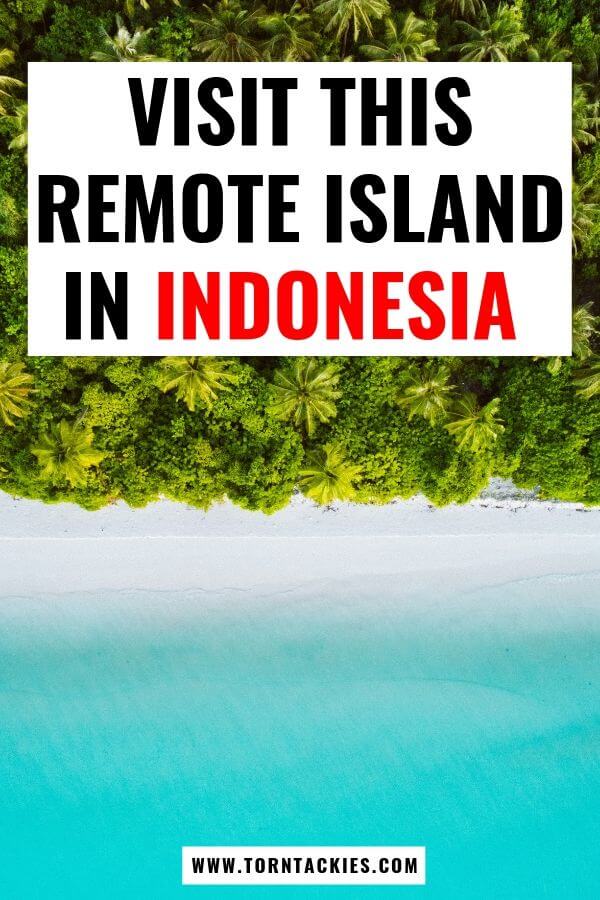
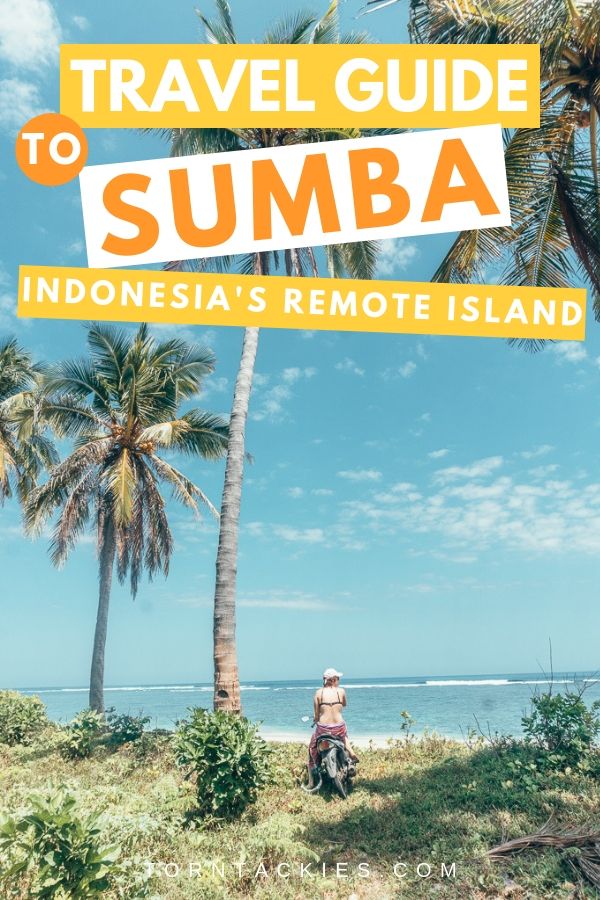
There is a really good chance that this post contains affiliate links. If you click one of them, I may receive a small commission at no extra cost to you. As always, views are my own!

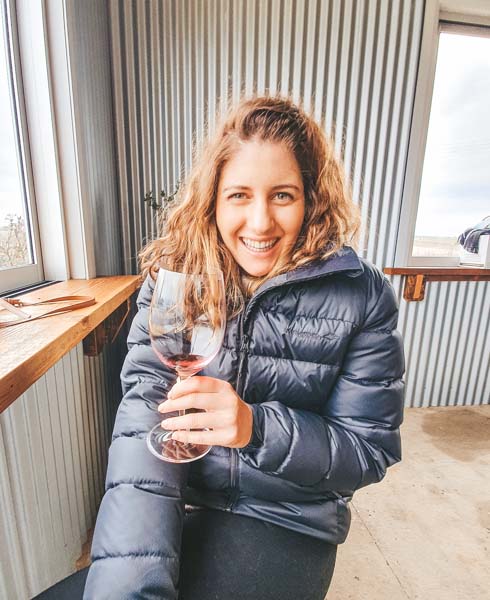
can you tell us where you stayed… everyone recommends Nihi, giving firsthand info on where people are actually staying and how often you needed to move vs. could do day trips would be amazing!!
thank you 🙂
Hi Renee, I stayed at Sumba Sunset Surf Camp on the west of the island, and Sumba Adventure Resort on the east. I spent 6 days at each. They are surf camps, but I don’t surf and I loved the vibe here! Sumba Sunset was my favorite! Both are close to the beach and offer all-inclusive packages(except alcohol). In this post, I detail everything about the places I stayed and what I loved, so check it out. I did excursions when I was going to and from the two sides of the island, and also rented a motorbike (which I only recommend if you’re familiar with riding one and go in groups because mine broke down numerous times!) But I mainly wanted to explore the beaches and relax, so I only did 2 days of excursions (both accommodations offer these and have drivers who can take you around) Hope that helps!
This is SUCH a helpful blog. Thanks girl!
Hi can you bike ride around , is the ferry regular , is there basically no accomodation other than in the cities , are there any eateries at all and finally is there fruit available . I’m riding from Maumere to Labuan Bajo in April maybe I should go to Sumba and then back to Ende and continue your thoughts would be good cheers Damian
Hi Damien,
Yes, the ferry’s run twice a week from Aimere in Flores to Waingapu in Sumba – you’ll need to confirm which days. It’s a long ferry (6-8 hours) but an exciting adventure as there are no tourists!
You can bike around Sumba Island. But if you’re renting a bike on the island, it most likely won’t be in great condition (if you can find one). If you’re renting from Flores, you’ll also need to confirm that you can take the bike to Sumba. The distances between towns in Sumba are far so ensure you always have enough fuel. Keep in mind that most people won’t speak English so that will also make it more difficult if you run into any issues with your bike.
I found that accommodation for tourists is limited to cities and I didn’t see any signs for local homestays between the cities. This is because there aren’t many tourists who visit Sumba so accommodation is generally in popular beach/surf areas and cities. The locals are extremely friendly and if you can’t find a place to stay, they will help you. But that’s if you can communicate with them. Same goes for food and restaurants. There are local food vendors and restaurants in the cities, but that’s about it. You can find fruit but it’s not like the rest of Indo where fruit is sold at every street corner.
There are many things to consider if you want to do this trip:
– How much time do you have? I recommend no less than 6 full days if you’re taking the ferry. This will give you enough time to enjoy the journey as there are a lot of places to explore – and no doubt you’ll need a bit of extra time for any travel delays if you’re just “winging” it.
– Will this time eat into your time on Flores? I absolutely loved Flores (Bajawa, Riung, Moni) so try keep at least 7 days for this island as well.
– Are you up for an adventure that’s not necessary “comfortable” travel? If you’re used to roughing it, traveling independently, going off the beaten track, speaking to locals then you’ll love Sumba. Depending where you go on Sumba, you might also go a few days without speaking to tourists (very different from Labuan Bajo which is super touristy)!
I loved Sumba because it was so unique and not like any other part of Indo. But I didn’t travel as independently as I normally do (I had prebooked accommodation and transport). In Flores I only used public transport and bike which is my preferred way of travel. I also found Sumba to be super expensive. So if you stay in “tourist” accommodation that provides your meals and accommodation, it will be a lot more expensive that anywhere else in Indonesia.
Hope that helps with your decision!
Carryn
Hi Carryn
Thank you for all the useful Information!
Very helpful 🙂
I am flying to Tambolaka
sorry got cut off…
I am gonna bring my laptop and wonder how safe it will be. Do you have any experience with this?
Thanks, Helena
Hey Helena,
I also traveled with my laptop and had no issues – but I was cautious and didn’t leave it out in the open when I wasn’t around. I kept it on me in my small day pack when I was traveling and locked it in my bigger travel backpack when I was out and about exploring.
Enjoy Sumba!
Carryn